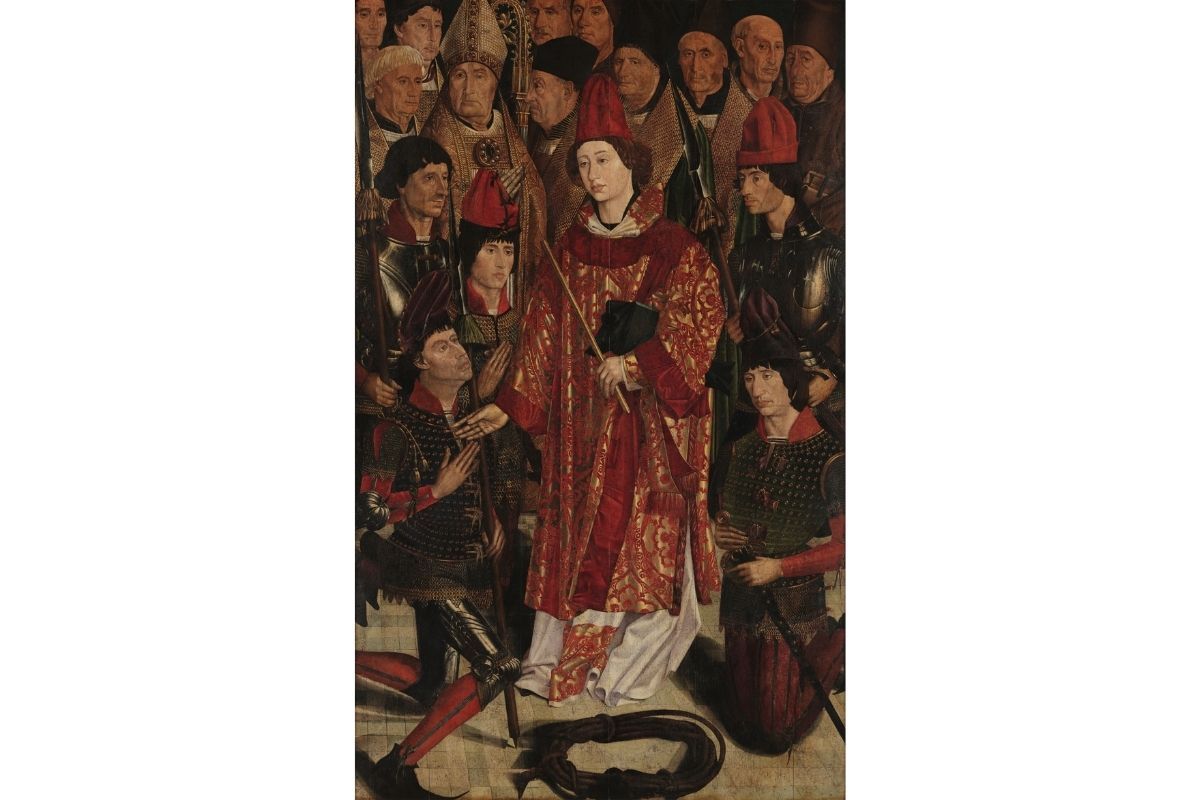Under these regulations, copies of the images cannot be made or provided to third parties (section 2.1). The images cannot be incorporated into any image database without the express consent of the DGPC (section 3.6), and all images must carry attribution to the DGPC, its photographic archive, and the name of the photographer who captured the image (sections 4. B & C). For website usage, the cost is fixed at 140 euros per year (section 1.2 – Utilization Fees).
These restrictions not only theoretically impede the inclusion of Portugal's museum collections in open-access image databases like Europeana.eu and Wikimedia Commons, but also prohibit creative adaptations of the artworks. They further add an extra layer of attribution by mandating credits to the DGPC and photographers even when the image is a two-dimensional reproduction of a Public Domain artwork.
These restrictions stand in stark contrast to the IMC’s (current DGPC’s) images available on Europeana.eu and Wikimedia Commons, creating significant confusion for those seeking to promote, research and market Portugal's national museum collections online. They also severely restrict the online presence of Portugal's cultural heritage.
To add to the confusion, Portugal's National Library, which like the DGPC sits under the umbrella of the Portuguese Ministry of Culture, maintains an open-access policy and recognises the Public Domain.
Looking to the future
In my opinion, there is a pressing need for Portuguese museums and the Portuguese Ministry of Culture to adopt consistent and standardised best practices concerning open access and Public Domain recognition for all image collections under the Ministry's purview.
For years, a group of NGOs and associations (Acesso Cultura, ANSOL, BAD, Knowledge Rights 21, Communia, Open Knowledge Portugal and Wikimedia PT), along with myself, has been actively corresponding with the DGPC and the Portuguese Ministry of Culture, emphasizing the importance of Public Domain recognition and open access policies for Portugal's museum collections, their images, and databases. Our recommendations were incorporated into a strategic policy document outlining recommendations for Portuguese museums over the next ten years. However, our success has been limited.
Recent changes in EU and national legislation may hold the key to opening up Portugal's museum collections. Firstly, Article 14 of the EU Copyright Directive (DCDSM), transposed into national law in Portugal in June of this year (2023), will almost certainly in my opinion, limit the imposition of authorship credits to the DGPC and its photographers on images of Public Domain artworks.
Secondly, as of 2024, the DGPC will cease to exist, and Portugal's national museums will fall under the purview of a new organisation, Museums and Monuments of Portugal E.P.E., a state-owned company. This change will provide Portugal's museums with much-needed greater financial autonomy over their accounts.
In light of this new organisation, regulations governing all income sources for Portugal's museums are being revised. The lending of spaces and ticketing has already undergone review. With current best practices and the efforts of myself and the NGOs in mind regarding Public Domain recognition, I hope that the next set of regulations will concern the use of images of museum collections and will prioritise Public Domain recognition and open access policies, as these measures have proven more beneficial to many museums compared to revenue generated from image requests.
The current state of Public Domain recognition for Portugal's museum collections is marked by contradictions and barriers. However, recent legislative changes and the forthcoming restructuring of Portugal’s national museums may offer hope for a more open and accessible future for Portugal’s rich heritage.
Find out more
If you would like to learn more about the issues raised in this post, we invite you to join the Europeana Network Association Copyright Community and to follow the work of the Article 14 Task Force.



